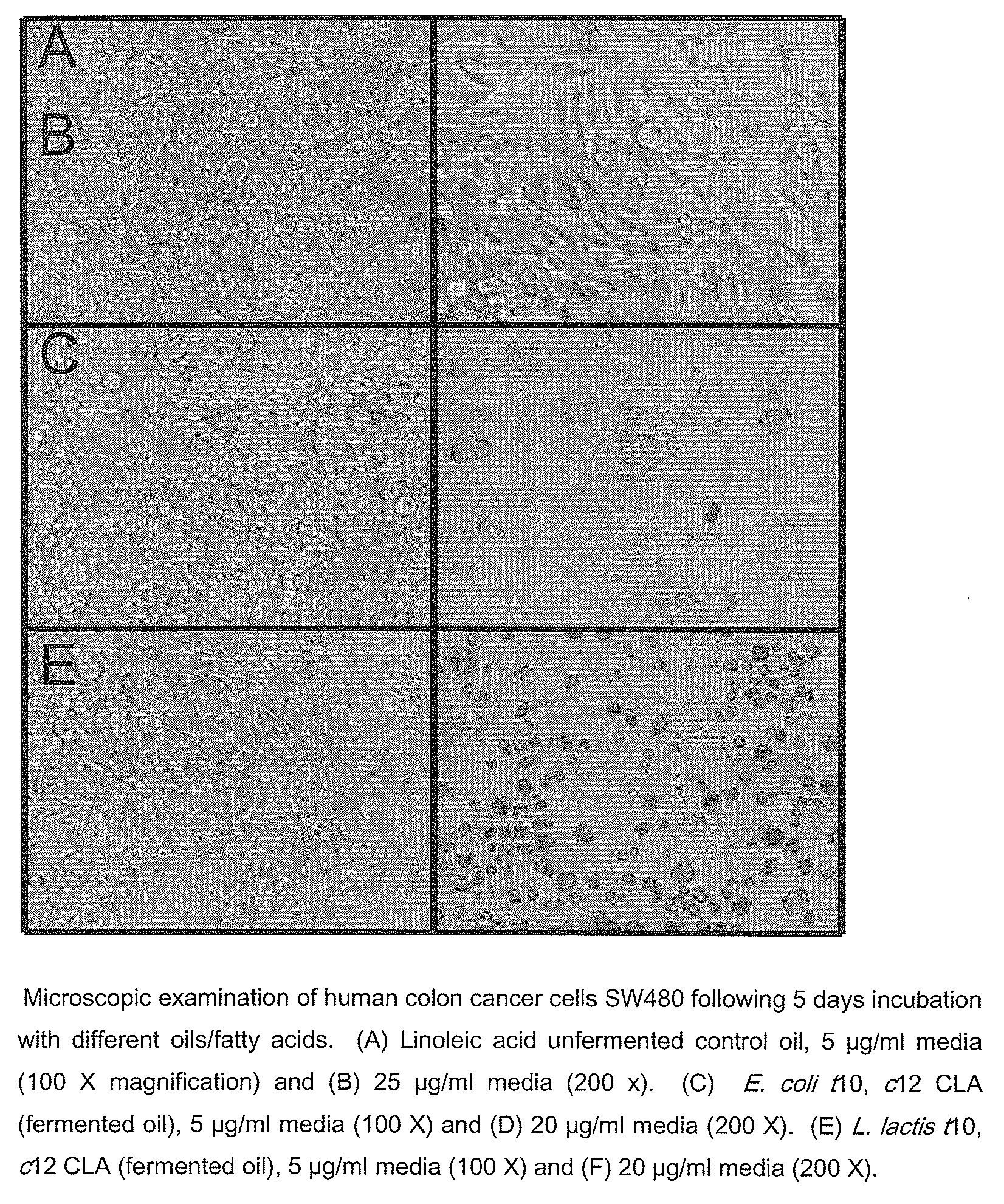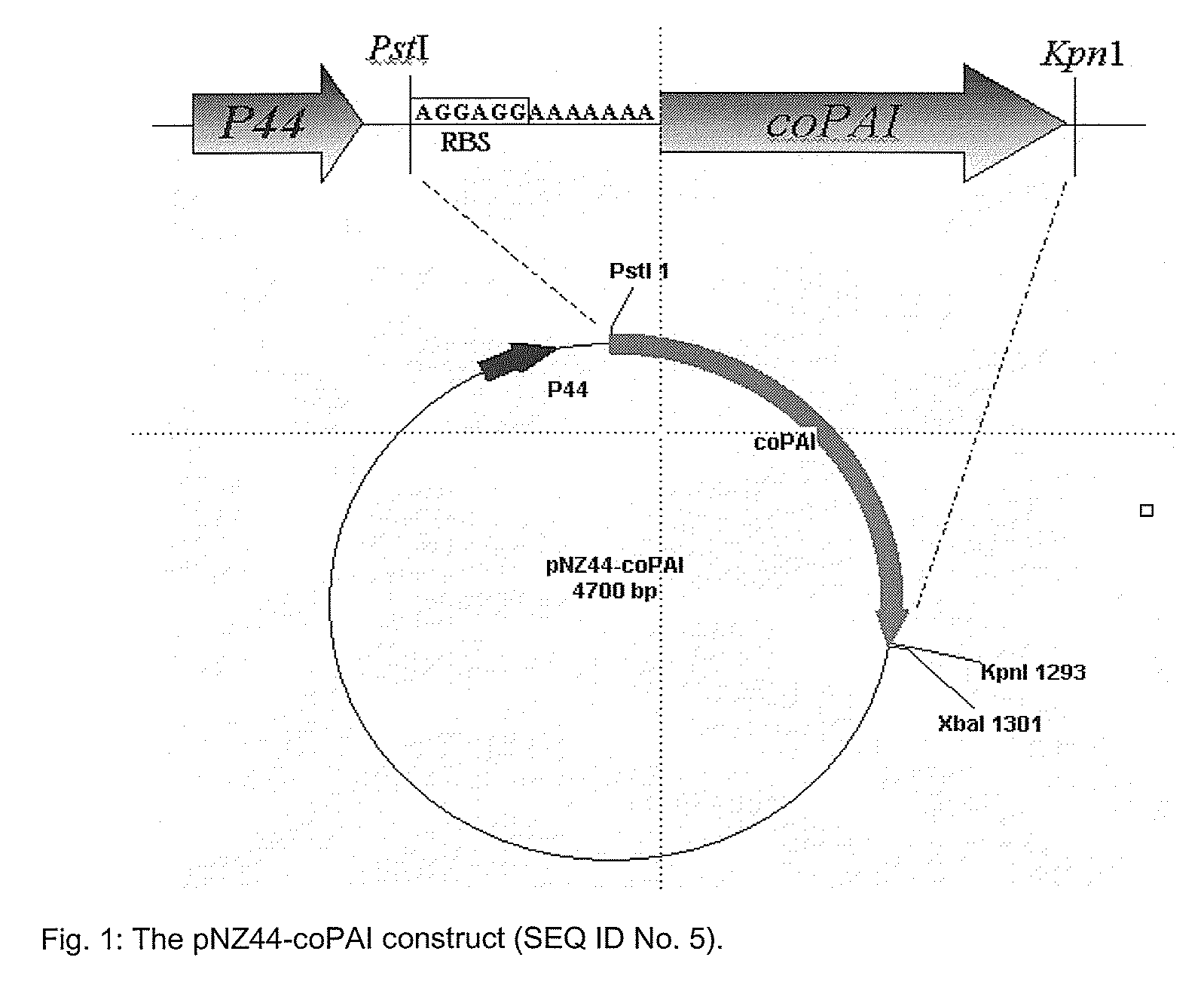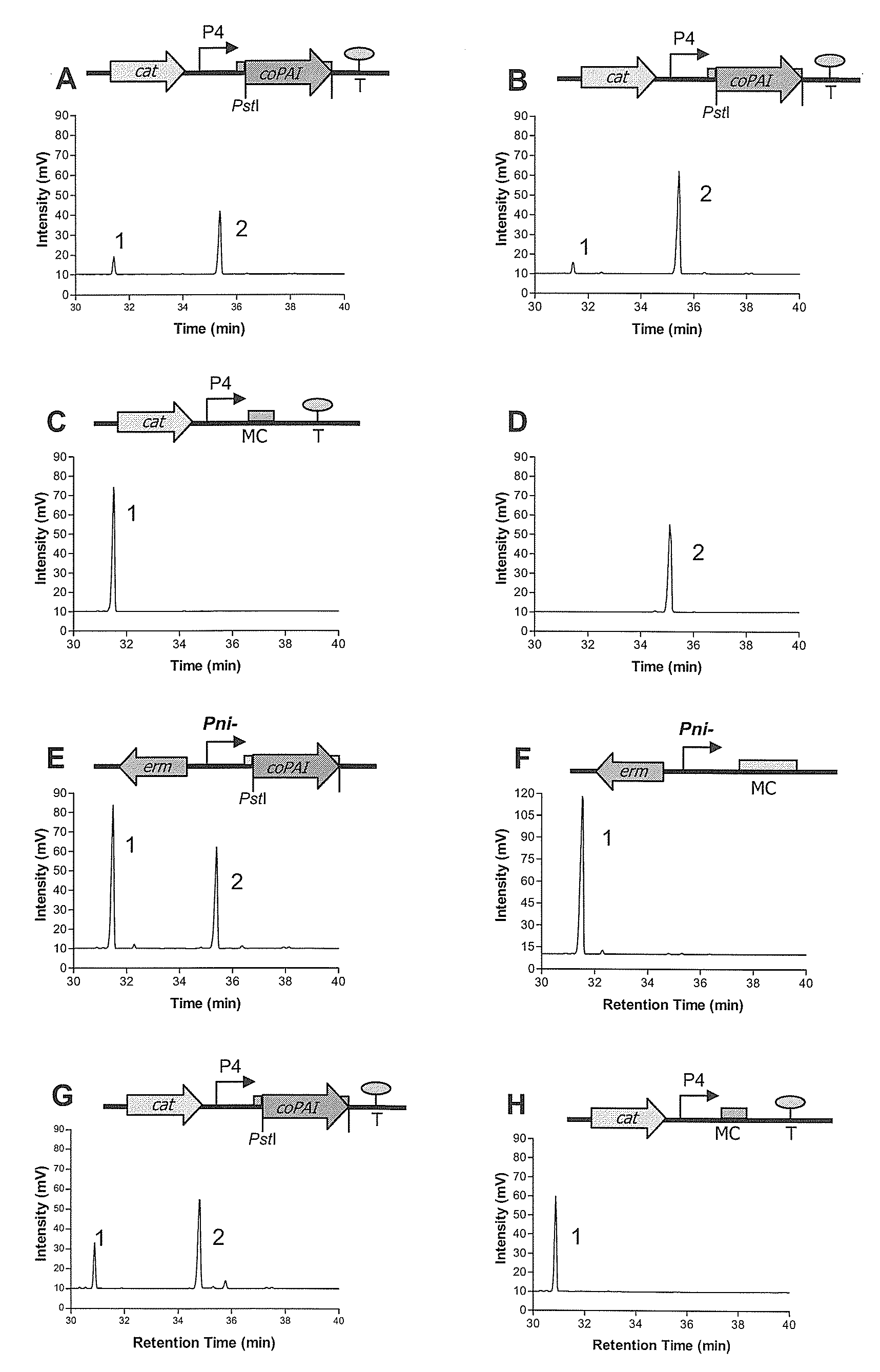Process for the production of trans-10, cis 12 octadecadienoic acid
- Summary
- Abstract
- Description
- Claims
- Application Information
AI Technical Summary
Benefits of technology
Problems solved by technology
Method used
Image
Examples
example 1
Cultures and Media
[0237]Lactococcus lactis NZ9800 (a L. lactis NZ9700 derivative which does not produce nisin because of a deletion in the nisA gene, and contains the nisRK signal transduction genes integrated on the chromosome) was cultured at 30° C. in M17 (Difco laboratories, Detroit Mich., USA) broth and / or agar containing glucose (0.5% w / v). The probiotic strain Lactobacillus paracasei ssp. paracasei NFBC 338 (Lb. paracasei NFBC 338) was previously isolated from the human gastrointestinal tract (GIT), and obtained from University College Cork, Ireland under a restricted materials transfer agreement. Lb. paracasei NFBC 338 was routinely cultured overnight (˜17 h) in MRS broth (Oxoid Ltd., Hampshire, UK) and incubated at 37° C. under anaerobic conditions using anaerobic jars containing Anaerocult A gas packs (Merck, Darmstedt, Germany). L. lactis carrying the plasmids pNZ44 were routinely cultured in the presence of chloramphenicol (5 μg / ml) as a selective marker. Lb. paracasei N...
example 2
DNA Manipulation
[0238]Two oligonucleotide primers were designed to amplify the complete linoleic acid isomerase (coPAI) for production of t10, c12 CLA from the original construct pC33.1-coPAI (linoleic acid isomerase gene in a plant vector; BASF, Germany). The forward primer, designated ERcoPAI1 (SEQ ID No. 3), contains a PstI restriction site and a ribosome binding site (RBS), four extra bases at the 5′ end and seven extra bases between the RBS and the gene start; 5′-AAAACTGCAGAGGAGGAAAAAAAATGGGTTCCATTTCCAAGGA-3′ (SEQ ID No. 3). The reverse primer, designated ERcoPAI2 (SEQ ID No. 4) contains a KpnI restriction site and three extra bases at the 5′ end; 5′-CGGGGTACCTCACACGAAGAACCGCGTCA-3′ (SEQ ID No.: 4). The 1278 bp coPAI gene was amplified in an Eppendorf Mastercycler Gradient (Eppendorf) with High Fidelity Expand as described by the supplier (Roche Diagnostics Limited, East Sussex, England) using 200 ng plasmid DNA (pC33.1-coPAI) as a template. PCR reactions were performed in a to...
example 3
Screening for CLA Production
[0239]Cis-9, trans-11 and trans-10, cis-12 CLA standards were purchased from Matreya (Matreya Inc., PA, USA) and linoleic acid from Sigma (Sigma Chemical, MO, USA). The L. lactis, Lb. paracasei and E. coli clones were tested for their ability to convert free linoleic acid (0.1-0.5 mg ml−1) to trans-10, cis-12 CLA as follows; 1% inoculum of an overnight culture was transferred to 10 ml broth and incubated until the culture reached OD600 nm ˜0.5. Then linoleic acid (0.1-0.5 mg / ml) was added to cultures and inducible cultures were induced with 30-50 ng / ml nisin (prepared from milk solids containing 2.5% (w / v) nisin, Sigma, N-5764) followed by further incubation for 48-72 h. Cultures subjected to time experiments were grown in a larger volume of broth and 10 ml samples were taken every 12 h. Following 48-72 h incubation the culture was centrifuged and fatty acids were extracted from the supernatant and dried down under a nitrogen stream followed by methylatio...
PUM
| Property | Measurement | Unit |
|---|---|---|
| Fraction | aaaaa | aaaaa |
| Fraction | aaaaa | aaaaa |
| Fraction | aaaaa | aaaaa |
Abstract
Description
Claims
Application Information
 Login to View More
Login to View More - R&D
- Intellectual Property
- Life Sciences
- Materials
- Tech Scout
- Unparalleled Data Quality
- Higher Quality Content
- 60% Fewer Hallucinations
Browse by: Latest US Patents, China's latest patents, Technical Efficacy Thesaurus, Application Domain, Technology Topic, Popular Technical Reports.
© 2025 PatSnap. All rights reserved.Legal|Privacy policy|Modern Slavery Act Transparency Statement|Sitemap|About US| Contact US: help@patsnap.com



